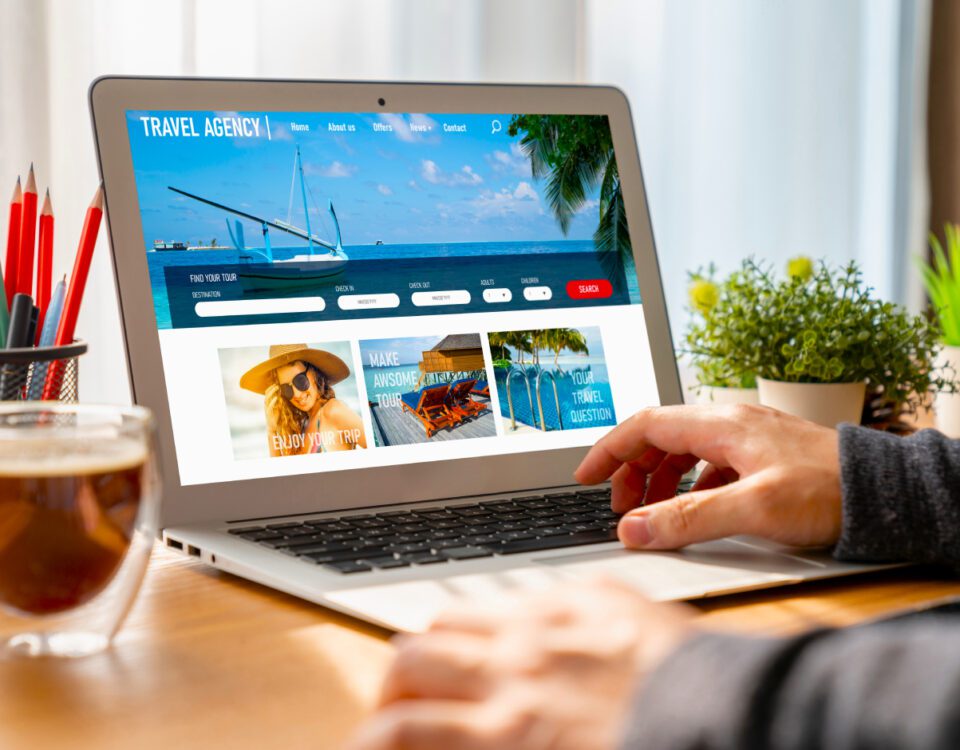Share
As the name suggests, social media is all about being social and getting involved with others in order to form communities and broaden your network - that’s why collaborations and influencer partnerships (also known as co-marketing) are a great option for brands. Joining forces with another brand or an individual can open up lots of opportunities to access new fans, boost your reach and bring new customers on board. Plus, with 71% of consumers confirming that they enjoy co-branding partnerships, it’s clear to see that they’re a big hit with audiences too. As with any type of social media campaign, some careful planning is required to make a collaboration run smoothly, so check out our tips and suggestions below before taking the next steps.
Choose Your Collaboration Type
Firstly, you need to decide what form of collaboration you’d like to do and what you want it to achieve - new followers, sales, sign-ups, engagements or positive sentiment? Here are some ideas for inspiration:
Competition/giveaway
Give your followers a chance to win a product, experience, gift card or cash prize. Learn more about social media competitions in our previous blog post.
Story takeover
Allow an influencer to post stories on Instagram or Facebook on your behalf for a set period of time, such as a day or week, or on a regular basis, such as every Friday.
Product promotion
49% of consumers depend on influencer recommendations, proving just how effective it can be to partner with someone who genuinely loves your product or service and wants to sing its praises.
Q&A
Encourage audience participation by hosting a question and answer session with your collaborator where they can find out everything they’ve always wanted to know.
All of these collaborations can either be a one-off or an ongoing feature on your social media pages - it’s completely up to you and your collaborator to decide how long the partnership is going to be.
Decide Who to Collaborate With
Once you’ve chosen your collab type, it’s time to find the right person or brand to partner with. Make sure it’s someone relevant to your own brand and industry (such as an athlete, personal trainer or sports team if you’re in the fitness industry, or a luggage brand or hotel if you’re in the travel industry), and do your research to confirm that their values align with yours. After all, you don’t want to damage your reputation by working with a brand or influencer who is untrustworthy or has been involved in controversies in the past. Additionally, ensure that they aren’t already working with one of your competitors, which could result in a conflict of interest.
Social media influencers can be separated into three categories, from which you’ll need to find the right fit for the size and nature of your brand:
Macro influencers
These influencers are just a step down from traditional celebrities (mega-influencers). They typically have between 100,000 and 1 million followers and have a fairly broad audience because they cover a range of topics instead of just one niche.
Micro influencers
These influencers have between 1,000 and 100,000 followers, and their content usually revolves around a specific niche.
Nano influencers
These influencers typically have less than 1,000 followers and operate within a super niche community, but as a result of their smaller audience size, are able to generate lots of engagement.
To get the ball rolling, reach out to them via social media, email, phone or via the contact form on their website if applicable, and introduce yourself and your brand. However, it’s important not to hassle them or spam their inbox with too many collaboration requests as this can deter them from wanting to work with you.

Establish a Contract with Clear Guidelines
In order to maintain an amicable partnership and to prevent potential problems between you and your collaborator further down the line, it’s best to assemble a contract which clearly outlines your expectations. This should be in writing and should include:
• A list of responsibilities from each party - What will you and your collaborator each supply? Who is in charge of each task during the collaboration?
• Deadlines - How long will the collaboration run for? If you need the collaborator to supply content or images by a specific time each week, when will this be?
• Compensation package and payment information - What will you give your collaborator in return for their work? How much will you pay them? Will it be a one-off payment or a regular schedule?
• Ownership of intellectual property and content - Who will own the rights to the content, images and videos you produce together?
You should also supply your brand guidelines to your collaborator at this stage. While they don’t necessarily have to follow your exact tone of voice in their own content, it can be useful for them to see how you want your brand to come across online, and what kind of image they should be portraying when representing your brand to their audience - especially if they are going to become your official brand ambassador.
Create Your Content
Now it’s time for the fun part: creating your collaborative content! This can either mean getting together in person - for example, if you’re filming a video or doing a photoshoot - or collaborating online to write a post, proofread something they’ve written, or add your branding to an image they’ve supplied. Make use of collaborative tools such as Google Docs, which enables multiple people to work on a document at the same time with easy sharing, comments and suggestions.
Decide whose page the content is going to be posted on, which platform, and at what time. Check for any upcoming calendar events or awareness days that could tie in with your collaboration so you can both reach an even wider audience. Don’t forget to do some cross-promotion too once the post has been published - this can be as straightforward as sharing or retweeting it onto your own page.
Disclosure of Sponsorships and Ads
Depending on the nature of your partnership, you and/or your collaborator may need to disclose the sponsorship in your content.
The ASA, which is the official Advertising Standards Authority here in the UK, states that: “Whenever a brand gives a social media user any kind of ‘payment’, subsequent posts that refer to the brand will need to disclose this, e.g. with a prominent label. ‘Payment’ includes any form of payment in cash or credit, giving a product or service for free, loaning a product or service for free, or any other incentive or commission”. Similarly, the CMA (Competition & Markets Authority) says: “If you’ve been incentivised in any way to promote a brand, or product in your social media content, for example in photos including carousels, videos, reels or stories, podcasts or other posts online it’s important that all this content is clearly identifiable as an ad (or advertising)”.
If you mislead customers through hidden ads you may be in breach of consumer protection law, so it’s crucial to read these resources carefully before publishing any collaborative content. Then, make use of the following ad disclosure tools on each social media platform:
• The Paid Partnership tag on Instagram
• The Branded Content toggle on TikTok
• The Paid Label on Facebook

Use Platforms’ Built-in Collab Tools
Instagram has its own collaboration feature called Instagram Collabs, which lets you combine the power of two accounts. The original poster can tag another account as a collaborator, who can then accept the request. If the other account accepts, the post will also show on their profile and will be distributed to their followers in the feed, with both creators’ names above it.
Meta’s Brand Collabs Manager is another useful consideration. It allows you to:
• Set up an audience match so you can find out what percentage of another creator’s audience matches your own
• Choose a creator (or group of creators) and find others with similar audiences
• Explore customised lists of creators based on your previous branded content partners, creators who like your Page and more
• Create project briefs
Monitor & Share Your Results
At the end of your collaboration - or throughout its duration if it’s an ongoing campaign - you should take a look at your results to make sure it’s achieving your desired goal. You should share these results with your collaborator, either by sending them a report or by giving them access to the analytics platform you’re using. Check out our Ultimate Guide to Social Media Metrics if you aren’t sure which ones to track. Keep hold of these results for future reference and to help you build an even stronger strategy next time you collaborate.
Summary
A social media collaboration is an excellent way to spread the word about your brand and its offerings, gain new fans and expand your network. What’s more, they generate genuine ROI - in fact, 54% of businesses say that partnerships drive more than 20% of their total company revenue. As long as you’re prepared to do your research beforehand and take time to find the right partner for you, you’ll be on the path to co-marketing success!
Want to check out some additional resources before launching a collab? Discover the difference between brand advocates and influencers in this episode of our podcast, or listen to this episode to learn more about the importance of disclosing ads online.









